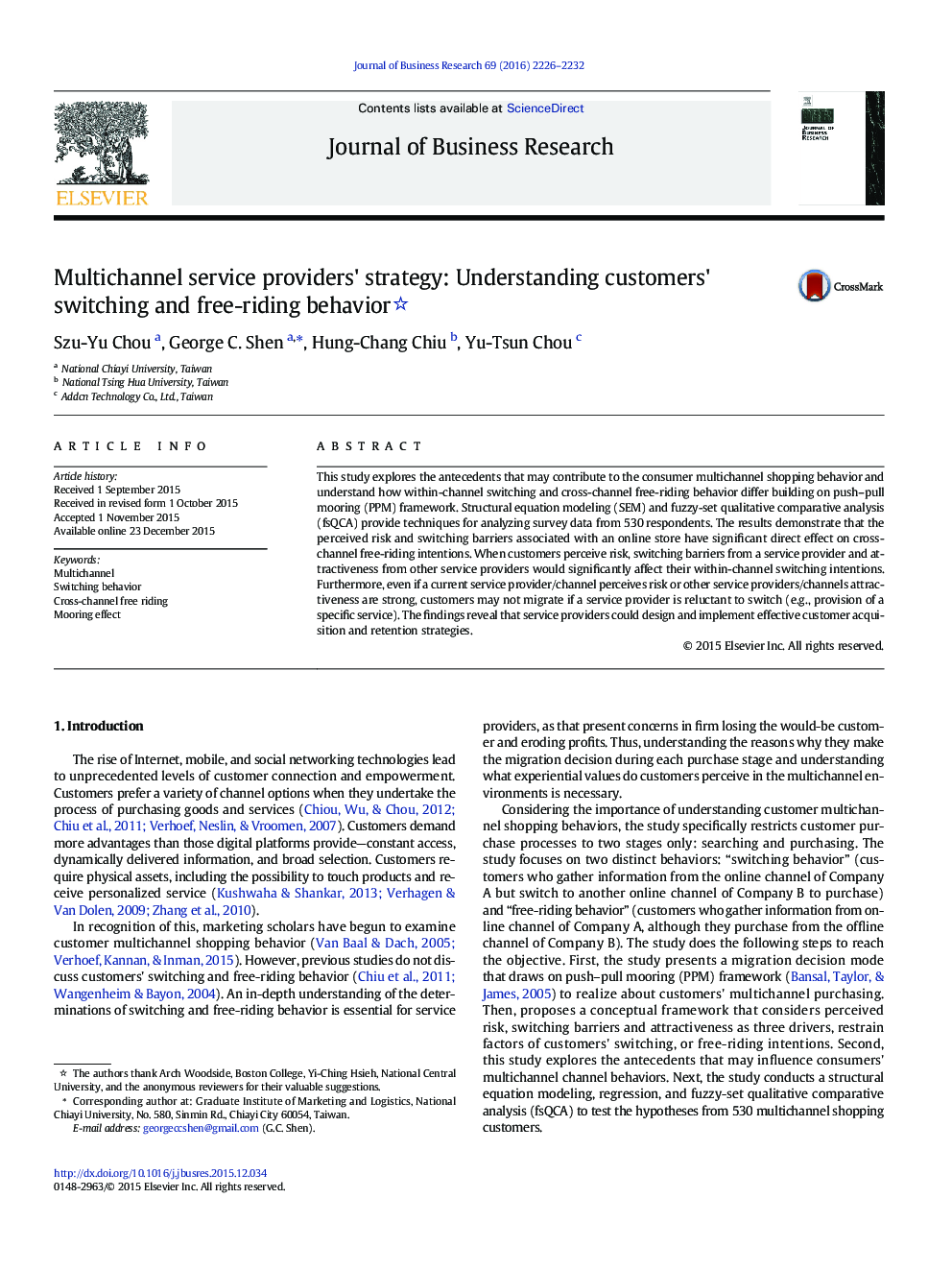| Article ID | Journal | Published Year | Pages | File Type |
|---|---|---|---|---|
| 1016956 | Journal of Business Research | 2016 | 7 Pages |
This study explores the antecedents that may contribute to the consumer multichannel shopping behavior and understand how within-channel switching and cross-channel free-riding behavior differ building on push–pull mooring (PPM) framework. Structural equation modeling (SEM) and fuzzy-set qualitative comparative analysis (fsQCA) provide techniques for analyzing survey data from 530 respondents. The results demonstrate that the perceived risk and switching barriers associated with an online store have significant direct effect on cross-channel free-riding intentions. When customers perceive risk, switching barriers from a service provider and attractiveness from other service providers would significantly affect their within-channel switching intentions. Furthermore, even if a current service provider/channel perceives risk or other service providers/channels attractiveness are strong, customers may not migrate if a service provider is reluctant to switch (e.g., provision of a specific service). The findings reveal that service providers could design and implement effective customer acquisition and retention strategies.
